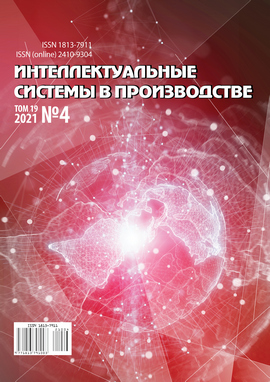Virtual Laboratory for Studying and Programming Stm32 Microcontrollers
DOI:
https://doi.org/10.22213/2410-9304-2021-4-98-110Keywords:
Microcontroller, architecture, programming, assembler, virtual laboratory, debugging, remote controlAbstract
Currently, the design of platforms based on microcontrollers is a very promising direction due to their reduction in cost and increase in the performance of circuits. Microcontrollers are installed in industrial equipment, smartphones and audio players, video equipment, and much more. The paper provides the theoretical foundations for working with microcontrollers of the STM32 series, their purpose, system architecture, software model, as well as the features of the ARM Cortex M3 core. 32-bit core has many advantages, but the main one is its versatility. The structure of a software and hardware complex for studying and programming microcontrollers located on a remote server using the step-by-step debugging mode is described. The paper also discusses the features of writing programs for microcontrollers of the STM32 series. The virtual laboratory is a platform for the visual study of microcontrollers and the Assembler programming language. The system allows you to program, flash and debug microcontrollers without purchasing them. The user can test a code on a real device and view memory areas, registers and other debugging information in real time, as well as watch all changes in peripheral devices using video broadcast. The GDB GUI web interface allows you not to install additional applications, but to debug the program right in the browser. All kinds of sensors and indicators can be connected to the system, with which the user can work. Examples of programs written in the Assembler programming language are given to demonstrate the work of a virtual laboratory. The proposed platform can be integrated into a training course for learning the Assembler programming language.References
Голубцов М. С. Микроконтроллеры AVR: от простого к сложному. М. : СОЛОН-Пресс, 2003. 286 с.
Благодаров А. В. Программирование микроконтроллеров семейства 1986ВЕ9х компании Миландр. М. : Горячая линия-Телеком, 2017. 232 с.
STM32: эпоха 32-битных микроконтроллеров наступила: сайт. URL: https://www.compel.ru (дата обращения: 09.06.2021). Текст: электронный.
Joseph Y. The Definitive Guide to the ARM® Cortex-M3 - Elsevier Inc, 2010. 531 p.
RM0008. Reference manual. STM32F101xx, STM32F102xx, STM32F103xx, STM32F105xx and. STM32F107xx advanced ARM®-based 32-bit MCUs. STMicroelectronics 2015. 1137 p. Режим доступа: www.st.com/resource/en/reference_manual/cd00171190.pdf (дата обращения: 09.06.2021).
Joseph Y. Embedded Systems with ARM Cortex-M Microcontrollers in Assembly Language (2nd Edition) - E-Man Press LLC, 2016. 545 p.
Trevor M. The Insider’s Guide to the STM32 ARM Based Microcontroller. Hitex Ltd., 2009. 106 p.
Geoffrey B. Discovering the STM32 Microcontroller. Indiana University, 2019. 244 p.
Carmine N. Mastering the STM32 Microcontroller. Leanpub, 2016. 819 p.
Warren G. Beginning STM32: Developing with FreeRTOS, libopencm3 and GCC. Apress, 2018. 430 p.
Артур Г. GCC. Настольная книга пользователей, программистов и системных администраторов. СПб. : ТИД "ДС", 2004. 624 с.
Vincent M. Assembly Language Programming - ISTE Ltd and John Wiley & Sons, Inc, 2012. 258 p.
Majid P. Advanced Programming with STM32 Microcontrollers. Elektor, 2020. 216 p.
Richard M. Using the GNU Compiler Collection. GNU Press, 2003. 458 p.
RealView® Development Suite. Getting Started Guide. URL: https://developer.arm.com/documentation/dui0255/b (дата обращения: 09.06.2021).
OpenOCD - Open On-Chip Debugger. Reference Manual. URL: http://openocd.org/doc/pdf/openocd.pdf (дата обращения: 09.06.2021).
A browser-based frontend to gdb (gnu debugger). Documentation. URL: https://www.gdbgui.com (дата обращения: 09.06.2021).


